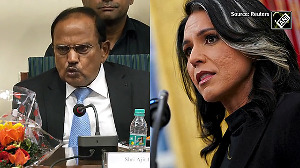 The surface of the earth will be fully covered by the mobile cellular network by 2015, up from 90% today, and half of the world's population will be using the mobile phones by that time.
The surface of the earth will be fully covered by the mobile cellular network by 2015, up from 90% today, and half of the world's population will be using the mobile phones by that time.
This is what the World Telecommunication/ICT Development Report 2010 released on Tuesday, forecasts.
The 217-page report authored by Susan Teltcher, head market information and statistical division, ITU, along with various other agencies and organizations, has given a call to all the countries to ensure that more than half of the global population gets access to the broadband mobile in next five years so that the benefits of ICT reaches many more people.
Releasing the report Samil Al Bashir al Morshid, director, telecommunication bureau of the ITU, Geneva, said that the report highlights the major achievements accomplished in connecting the people via mobile technologies.
"The report also point to the persistent broadband divide which policy-makers need to tackle urgently. Whereas by the end of 2009 most people in the developed countries enjoyed Internet access with a high-speed connection, broadband penetration rates in the developing world stood at a meagre 3.5 per cent.
The report has focused on the mid-term review of the ten targets fixed at the World Summit of Information Society in Tunis in 2005 to be achieved by 2015.
The report in its recommendation has called for building an ICT-literate society globally and development of online content and applications in the local languages to make the ICT tool more useful to them.
"These targets range from connecting villages, schools, health centres, libraries and government agencies to developing content and providing ICT services to the people," he said.
Giving the highlights of the report, Susan Teltcher, head market information and statistical division, ITU, said that though there has been impressive progress in the use of ICT, still there were a large number of the people in the world who were missing its benefits.
The report recommended that it should be ensured that more than half of the world inhabitants have access to ICT , especially broadband mobile with in their reach and make use of them.
By 2009, 1.7 billion people or 26% of the world population were on line and 25% households had access to the internet. While the global internet user penetration was 64% in developed countries, it was less than 20% in the developing countries
Europe and CIS have countries have crossed 100% penetration of mobile services and most developed countries had achieved the target and many developing countries were also approaching it.
On the issue of digital divide, the report said that it was significant. "While some countries and regions of the world were going increasingly high speed, others risk falling behind," the report stated.
While today 75 per cent of all households have a television set, only 25 per cent have Internet access. In the developing countries, home Internet penetration is as low as 12 per cent."
To achieve the target of more than 50% of world population getting access to the broadband by 2015, the report recommended that the governments should take action on various fronts including building necessary infrastructure, and providing public access expanding skills and creating relevant and local content, exploit the potential of wireless broadband by expanding the 3G coverage to all segments of population, particularly the rural areas, and lower the cost through competition.
Giving the example of India and China, the report said that mobile technology has provided basic telephone service to over 90% of villagers and more than half of the rural households have a mobile phone.
The report said that while 100% earth was covered by terrestrial and satellite Radio and TV signals, 1.4 billion households have a TV, half of them with multi-channel services. While the developed world had more than 90% household with TVs, it was only 28% in Africa. The figure was more than 82 and 75% in case of Arab states and Asia-Pacific.
Report also said that Internet was dominated by ten languages, headed by English and followed by Chinese, Japanese and Arabic, and recommended that the contents should be developed in the local languages.
Other recommendations include connecting villages with ICT and establishing community access points, connecting universities, colleges, secondary schools and primary schools.
The report said that 75% of world's rural population was covered by a mobile cellular signal and more than half of rural households in the world have a mobile phone, but very few have Internet.
It pointed out that 62% of the countries had a national research and education network and bandwidth of these networks range from few megabits to over 10 gigabits.
On the goal of connecting health centres and hospitals with ICT, the report said that some progress was made but a lot more has to be done.
Dr Hamdoun Toure, secretary general of International Telecommunication Union, said that he was certain that next decade will be the decade of broadband and it was running a 'Build on Broadband' campaign to increase awareness of the vital role it will play in the 21st century in every country in the world.










 © 2025
© 2025